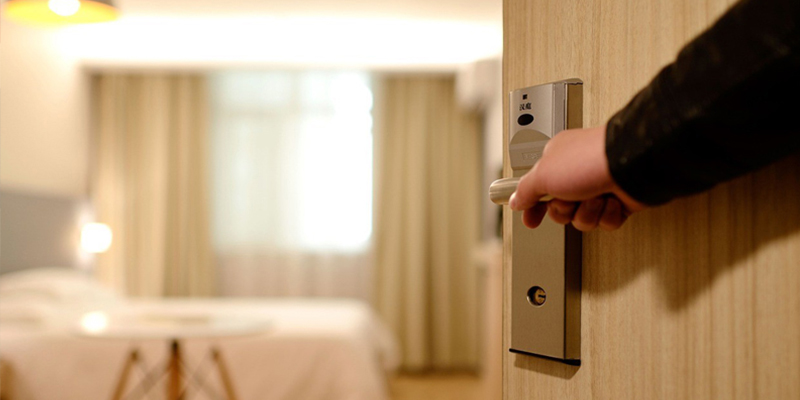Dining goes online
Cloud kitchens: the future of full-service restaurants
The future of restaurants is in the Clouds.
If one were to describe in a line how the world changed during the Covid pandemic, it would be: it went online. What Zoom is for the working world and Netflix is for movies, cloud (ghost) kitchens are for restaurants.
It’s all about the efficiency of the service and the consistency of service, because the robots are not disturbed by human moods. Sometimes, we say we are not in the mood, but the system and the robot will always be in the mood.
-Andy Wang, CEO of Alibaba Future Hotel Management
Cloud kitchens are essentially “virtual” kitchens – a kitchen that a customer would never visit. Sounds familiar? Cloud kitchens are the essential back-end component of household apps such as Uber Eats, Postmates, Grubhub and DoorDash. Like many other innovations, cloud kitchens are a prime example of pre-COVID technologies whose adoption has been accelerated with the en masse restaurant shut-down. The concept was already popular in the US, but with the spread of the COVID-19 pandemic, it has become one of the only ‘germ-free’ option to eat out.
Cloud kitchens are fascinating because of their high profit margins. There are no capital costs for sustaining a prime restaurant and labor costs are lower because of the lack of service staff. Revenue for cloud kitchens also tend to be higher because the entire focus of the establishment on the food enabling them to create dishes that are both higher quality and lower cost. A full-fledged restaurant in New York City can cost between $1 – $1.5 Million USD to set up but a cloud kitchen can get up and running for a tenth of the cost.
Wide-scale business transformation using technology is possible – and should be executed – by boutique and traditional hotel chains. Technological innovation in structure and ideology is the key to surviving COVID-19 as we – according to Laura Wolinsky – do the “slow crawl back to normalcy for traditional hotels.
The revenue in the online food delivery market is expected to reach $137, 596 Million worldwide by 2023 and a recent survey suggests that 67% of the restaurant owners would want to open a cloud kitchen as their next outlet.
COVID-19 has only accelerated the growth of Cloud kitchens. Exclusive Cloud kitchens have started sprouting across bigger cities, to cater to the tech savvy millennials who were in need of budget yet quality meals delivered at short notice. What is interesting to note here is that COVID-19 has triggered a wave of “exclusive cloud models” instead of the model’s popularity coming from sole hasty-conversions of struggling full-service models who wish to stay afloat during COVID.
Right now, when one thinks about Cloud kitchens, you imagine them in an industrial warehouse or a small isolated strip-mall. Large warehouses with low rents are considered ideal, as long as they’re situated within a certain radius around residential areas. The more customized the food is to the area, the better the chances of regular customers, similar to full-fledged restaurants. However, given their stunning efficiency, why not Five Star Hotels?
Understanding that hotel fine dining is going out of style is a hard pill to swallow but cloud kitchens have carved a niche purpose for themselves and their cost-benefit is one that can no-longer be ignored.
One of the most important drivers of F&B in hotels is group demand which has vanished post-COVID 19. Add to that the general growing hesitation with indoor dining, traditional F&B is reduced to an expensive line item with expensive rent and low return. This is particularly dangerous for high-end and boutique independent hotels which already have high operational costs and have fared worse during COVID-19.
Cloud kitchens provide an elegant solution for hotels – rather they re-emphasize local cuisine – even beyond their business benefits. Cloud kitchens contain an implicit element of democratic entry – an aspect that hotel F&B infamously lacks. This aspect of cloud kitchen has immense strategic potential for independent boutique hotels especially.
There is a window of opportunity for industry leaders to invest in people, reinvent operating models and modernize the people side of the hospitality industry.
An important draw of independent hotels is their local roots. Cloud kitchens reduce barriers to entry for new chefs and entrepreneurs which can help position the hotel as a local cuisine incubator. Cloud kitchens can be leveraged by independent boutiques to draw travelers as well as generate higher revenue and engagement through local deliveries.
However, like most technologies, the model has a significant drawback in that it dismantles the aura, prestige, and – dare I say, for the older seasoned traveler – nostalgia. Cloud kitchens definitely disrupt the draw of critical component of Executive Chefs and legacy restaurants. Unfortunately, many hotel restaurants are headed for permanent closures, and hotel properties may follow if they do not capitalize on the growing set of under-utilized restaurant spaces.
Cloud kitchens are the future of hospitality. Although it is hard to think about The Mondrian without the physical view of the iconic Ivory on Sunset restaurant – which has been closed since the start of the pandemic – there is something comforting about knowing that it might be replaced by a cloud kitchen that can deliver their lobster scramble to the comfort of your home.
Learn how other innovations in technologies, sustainability, personalization, and branding impact the hoteling sector. Read more in Alexander Mirza’s New York Weekly article.



